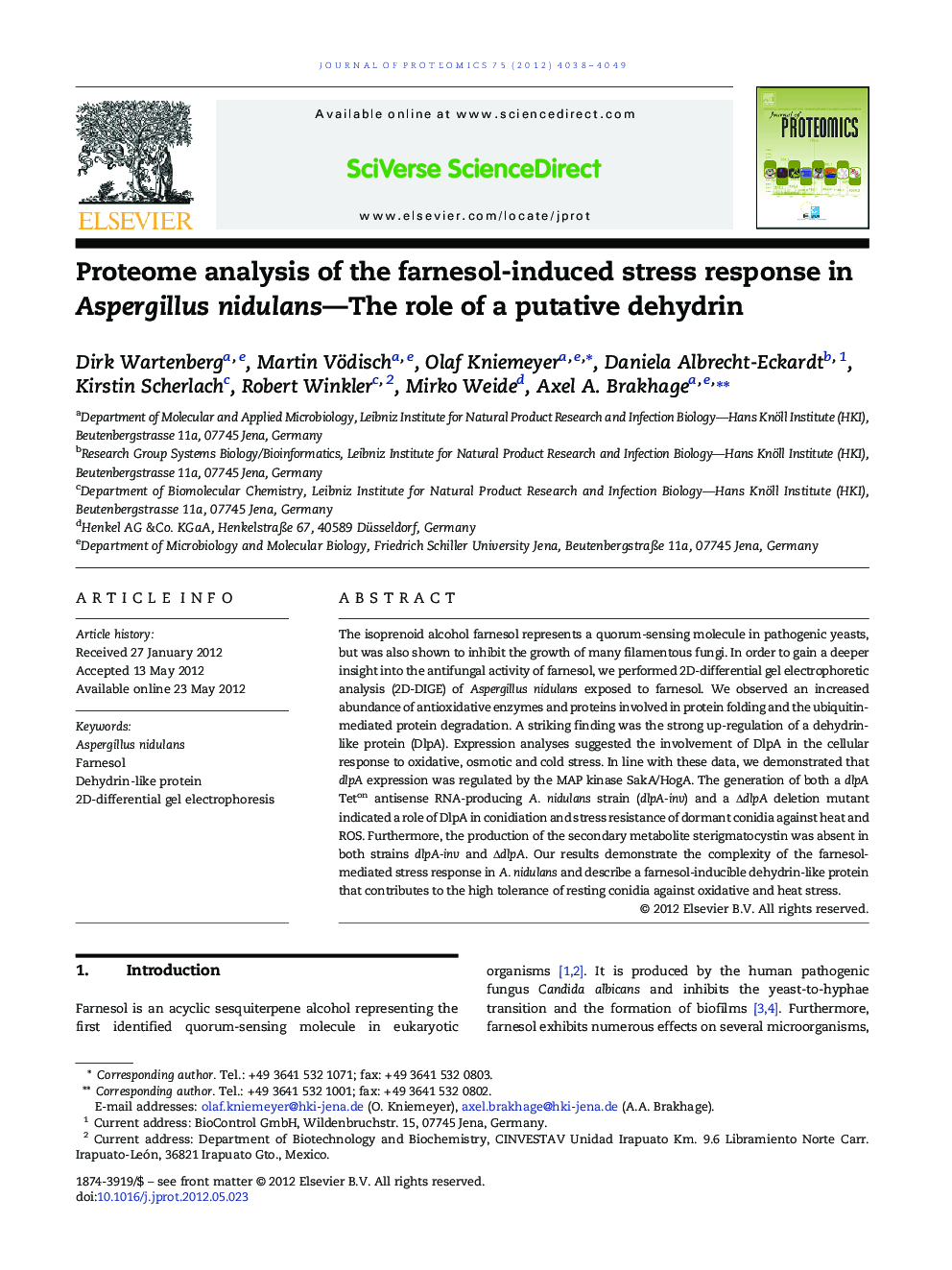| Article ID | Journal | Published Year | Pages | File Type |
|---|---|---|---|---|
| 1225837 | Journal of Proteomics | 2012 | 12 Pages |
The isoprenoid alcohol farnesol represents a quorum-sensing molecule in pathogenic yeasts, but was also shown to inhibit the growth of many filamentous fungi. In order to gain a deeper insight into the antifungal activity of farnesol, we performed 2D-differential gel electrophoretic analysis (2D-DIGE) of Aspergillus nidulans exposed to farnesol. We observed an increased abundance of antioxidative enzymes and proteins involved in protein folding and the ubiquitin-mediated protein degradation. A striking finding was the strong up-regulation of a dehydrin-like protein (DlpA). Expression analyses suggested the involvement of DlpA in the cellular response to oxidative, osmotic and cold stress. In line with these data, we demonstrated that dlpA expression was regulated by the MAP kinase SakA/HogA. The generation of both a dlpA Teton antisense RNA-producing A. nidulans strain (dlpA-inv) and a ΔdlpA deletion mutant indicated a role of DlpA in conidiation and stress resistance of dormant conidia against heat and ROS. Furthermore, the production of the secondary metabolite sterigmatocystin was absent in both strains dlpA-inv and ΔdlpA. Our results demonstrate the complexity of the farnesol-mediated stress response in A. nidulans and describe a farnesol-inducible dehydrin-like protein that contributes to the high tolerance of resting conidia against oxidative and heat stress.
Graphical abstractFigure optionsDownload full-size imageDownload high-quality image (163 K)Download as PowerPoint slideHighlights► The farnesol-induced stress response of A. nidulans was analysed by 2D-DIGE. ► A dehydrin-like protein (dlpA) was identified as a target gene. ► DlpA activity affects vegetative growth, spore viability and secondary metabolism.
